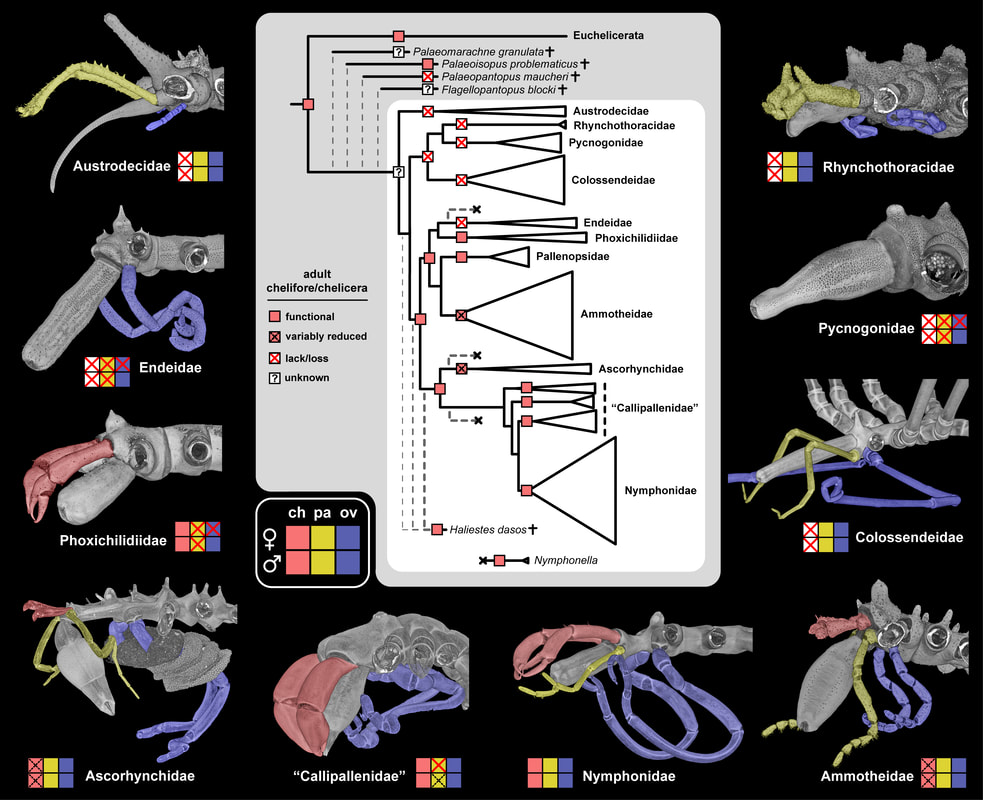Phylogenomics
To infer macroevolutionary processes, we infer relationships of invertebrates using genome-scale datasets. These datasets span transcriptomes, mitogenomes, ultraconserved elements, target-capture of conserved exons, and whole genomes. Recent projects in the lab have focused on the internal phylogeny of groups like scorpions, sea spiders, and Chelicerata as a whole.
We use these phylogenies as the framework upon which we reconstruct macroevolutionary phenomena, like the evolution of arthropod appendages.
We use these phylogenies as the framework upon which we reconstruct macroevolutionary phenomena, like the evolution of arthropod appendages.

